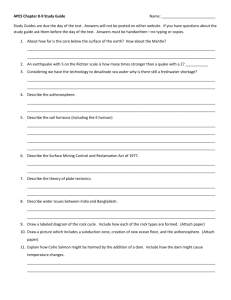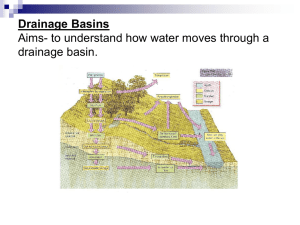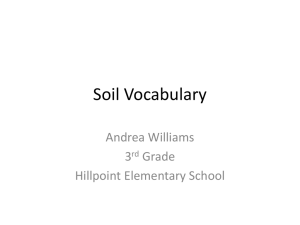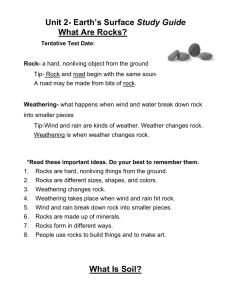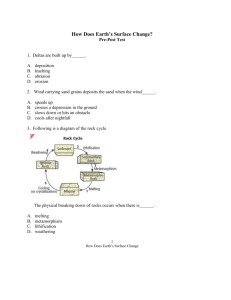Ch. 6 Study Guide
advertisement
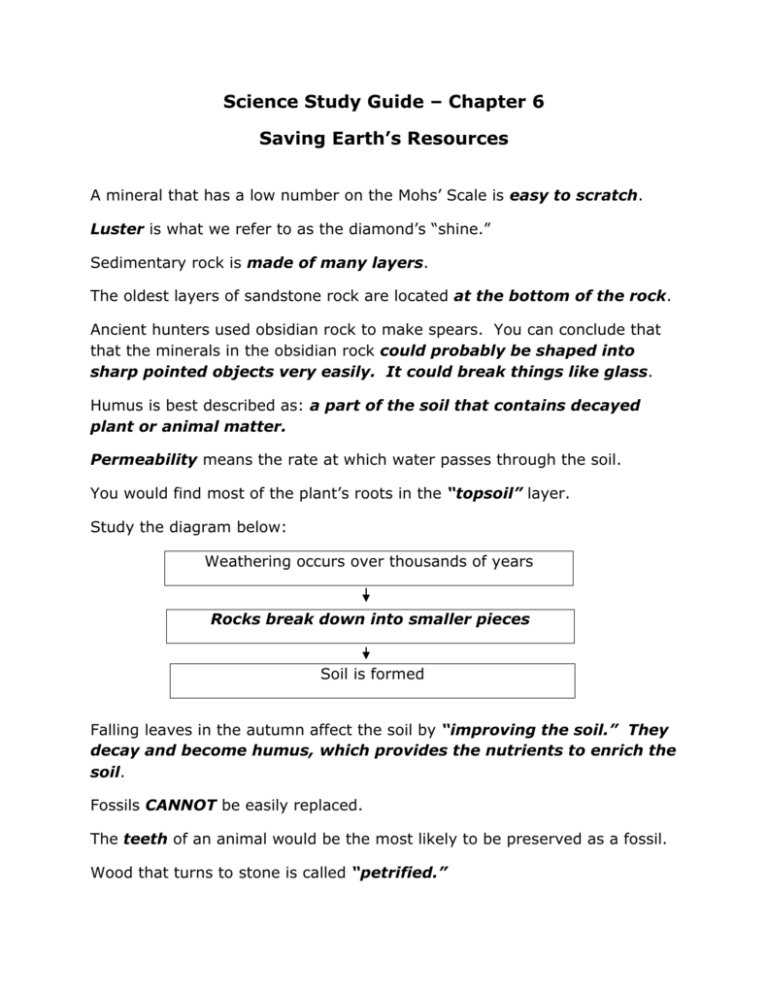
Science Study Guide – Chapter 6 Saving Earth’s Resources A mineral that has a low number on the Mohs’ Scale is easy to scratch. Luster is what we refer to as the diamond’s “shine.” Sedimentary rock is made of many layers. The oldest layers of sandstone rock are located at the bottom of the rock. Ancient hunters used obsidian rock to make spears. You can conclude that that the minerals in the obsidian rock could probably be shaped into sharp pointed objects very easily. It could break things like glass. Humus is best described as: a part of the soil that contains decayed plant or animal matter. Permeability means the rate at which water passes through the soil. You would find most of the plant’s roots in the “topsoil” layer. Study the diagram below: Weathering occurs over thousands of years Rocks break down into smaller pieces Soil is formed Falling leaves in the autumn affect the soil by “improving the soil.” They decay and become humus, which provides the nutrients to enrich the soil. Fossils CANNOT be easily replaced. The teeth of an animal would be the most likely to be preserved as a fossil. Wood that turns to stone is called “petrified.” Some things a scientist might be able to learn about an ancient creature from its foot imprint might be: how much a creature weighed depending on how deep the imprint is. If it has sharp claws it might tell scientists that the creature was a ferocious hunter, a webbed foot would show that the creature could swim. Water flows over the land without evaporating or soaking into the ground is called runoff. You can get groundwater by digging a well. A reservoir uses pipes to move water into cities. Glaciers and ice caps are made of frozen salt water – this is NOT A TRUE statement about salt water. A community that lives near a watershed might become concerned when a chemical factory is built nearby because they might produce harmful chemicals and other pollutants that would be carried over the land by runoff. The polluted runoff might contaminate the watershed. Chemicals and solid wastes are two examples of pollution. Repairing a leaky garden hose is one way someone can conserve water. Recycling is a way to prevent pollution. Farmers rotate crops in order to conserve nutrients. Many parks and other public areas have posted signs that say “Please clean up after your pets.” Animal waste pollutes the environment. By picking it up you could help reduce water pollution not allowing the animal waste to be washed into a storm drain and into a nearby water source. Study the diagram below: Renewable Resources Wind Water Sun


